horizontally get best view.
Breath-taking Moment
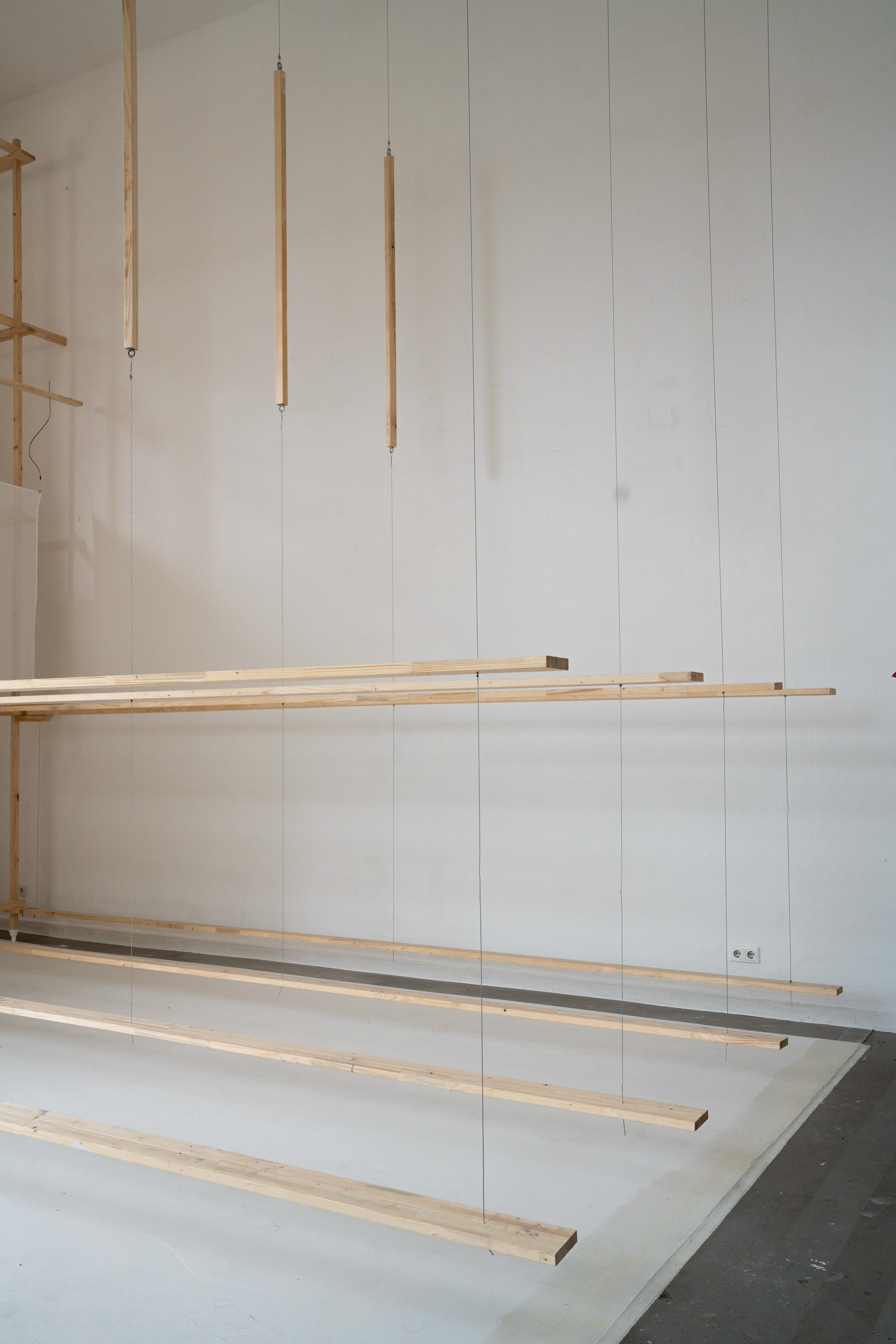
Breath-taking Moment
— Even though part of this work originates from a previous one, it belongs solely to this space.
Chronologically speaking, this current work partly derives from the artist’s earlier piece completed in February 2024. That previous work explored the illusion of spatial perception: by replicating wall surfaces and physically compressing the exhibition space, the aim was to force both viewers and fellow artists in a group show to confront the value of space itself.
While completing that earlier work, the artist was already thinking ahead to his upcoming graduation piece scheduled for July. With this in mind, he intended to further develop and refine the conceptual language already established.
Due to both conceptual planning and the physical nature of the installation, the artist granted this work the “right” to occupy Room 214 for nine months — an uncommon practice at Kunstakademie Düsseldorf. To realize this, the artist invested an enormous amount of physical effort, financial cost, and unseen labor in communication and coordination. Thus, when entering the second phase of the work’s creation, he found himself inevitably influenced by the spatial presence of the previous piece still in Room 214.
In the end, he chose to regard the earlier installation as an architectural feature of Room 214 itself, using it as both a conceptual springboard and something to be subtly resisted. The focus of the work shifted: from compressing space to directing vision. He retained the wall framework and glass windows from the earlier work, and on top of that, built a new set of visual anchors — all designed to guide the viewer’s gaze. These anchors include: the manipulation of fabric by natural wind, a series of elements that create tension between the interior and the architectural exterior, and a careful orchestration of spatial visibility. Together, they affirm that this work was created for this specific room. The architectural orientation of the building, the height and location of Room 214, and its existing structural quirks all combine to produce a sensorial experience that cannot be moved, copied, or repeated elsewhere. It belongs only to Room 214.
屏息凝神 Breath-taking moment
從完成的時間點上來看,實際上眼前的這件作品有一部分是來自於作者的上一件作品。上一件作品完成於2024年的2月份,當時所討論的是製造對空間體感的錯覺:通過製造複製牆面來擠壓群展的展覽空間的方式。試圖令觀眾以及當時群展的其他作家體會展場的空間價值。
而在完成上文所述的這一部分時,作者也已經將接下來於7月的畢業作品考量在內,並期望能夠將這一概念進一步完善。
於這樣的觀念安排,以及作品體量等因素,實際上作者是賦予了這件作品在Rm.214佔據了9個月的空間的權利。實現並貫徹這樣的背景概念,在杜塞美院是並不多見的。為此作者一個人耗費了相當的體力,經費,以及籌備創作背後,那令人無法想象的協調溝通工作。 所以在完成第一階段的創作之後,在開展第二階段的創作安排時,作者自己都無法避免的受到了已經存在於Rm.214之中的上一件作品的影響。最終,作者融合了十多個方案,將概念的實現方式從壓縮空間,轉變為引導視線之上,並為我們呈現了眼前這件作品。
決定將之前的作品當作是Rm.214中原有的一部分,從而使他在順應原有概念的同時,又可以擺脫一定的束縛,並在此基礎上進行他的表達:從製造空間的局促轉向為製造空間的聚焦。所以他保留了前一次作品的牆面框架以及被製作出來的玻璃窗。然後在此基礎上,建立了一系列的視覺錨點,所有的這些設置都是為了引導視線而服務。結合這些設置,包含引入自然風對薄紗的造型控制,以及從兩個玻璃窗之間引申至整個建築之外的衝突物件,都明確的表達出他的這件作品就是為了這個空間而生。這件作品得益於這棟建築的方位朝向,Rm.214所處在這棟建築的位置高度,以及Rm.214內固有的樣式,這件作品為觀眾提出了一種感官交互的唯一性,一個無法搬離或被複製的空間體驗,它只屬於Rm.214。
以下是作者对这件作品的引导语:
“当你走进这间房间,你会先在门前的这个区域停留,我保留了这间屋子被日常使用时各种痕迹。
之后你便会意识到眼前是一个被白色所区隔开的另一个区域,在这里你便需要决定时候踏入这个干净的白色区域,你无需取得允许,你需要自己判断,是否要走进去。是否想要走进到窗前去把薄纱后的东西看清楚。
我希望你的好奇心能够驱使你走到这一步,但同时也希望你站在白色之外的这一端,静静观看空气流动的模样,并等待一个屏息凝神的瞬间。”
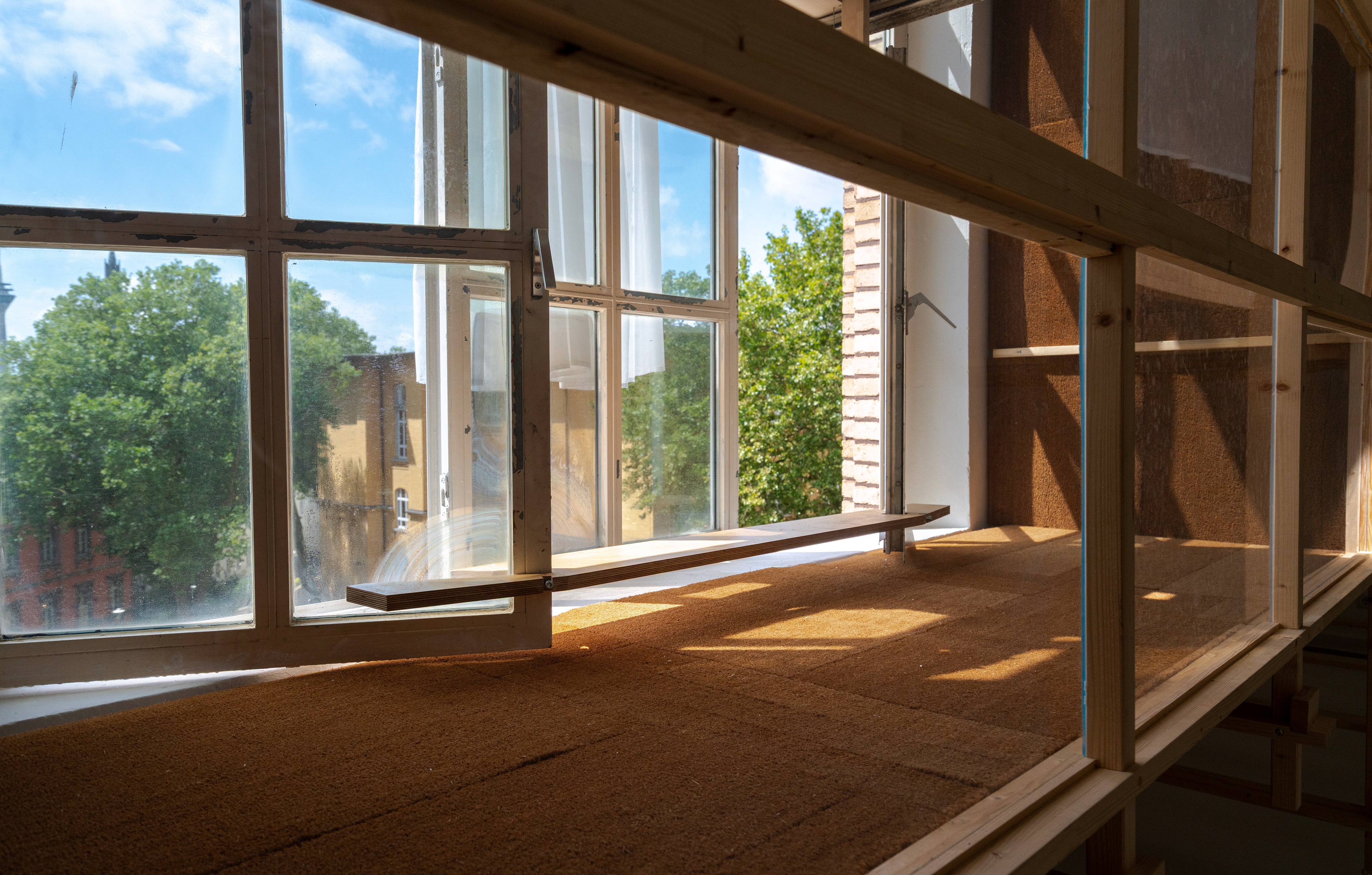
The artist offers this note as a guide:
“When you enter the room, you will first pause in this area near the door. I have preserved traces of everyday use from the room’s former function. Then you’ll notice that the space in front of you is separated by white — a clean, designated area. Here, you must decide whether to step into that white zone. You don’t need permission; you must decide for yourself. Do you want to approach the window and see what lies behind the fabric?
I hope your curiosity leads you there — but at the same time, I hope you’ll stay just on this side of the white, quietly watching the air move, and waiting for that breath-taking moment.”

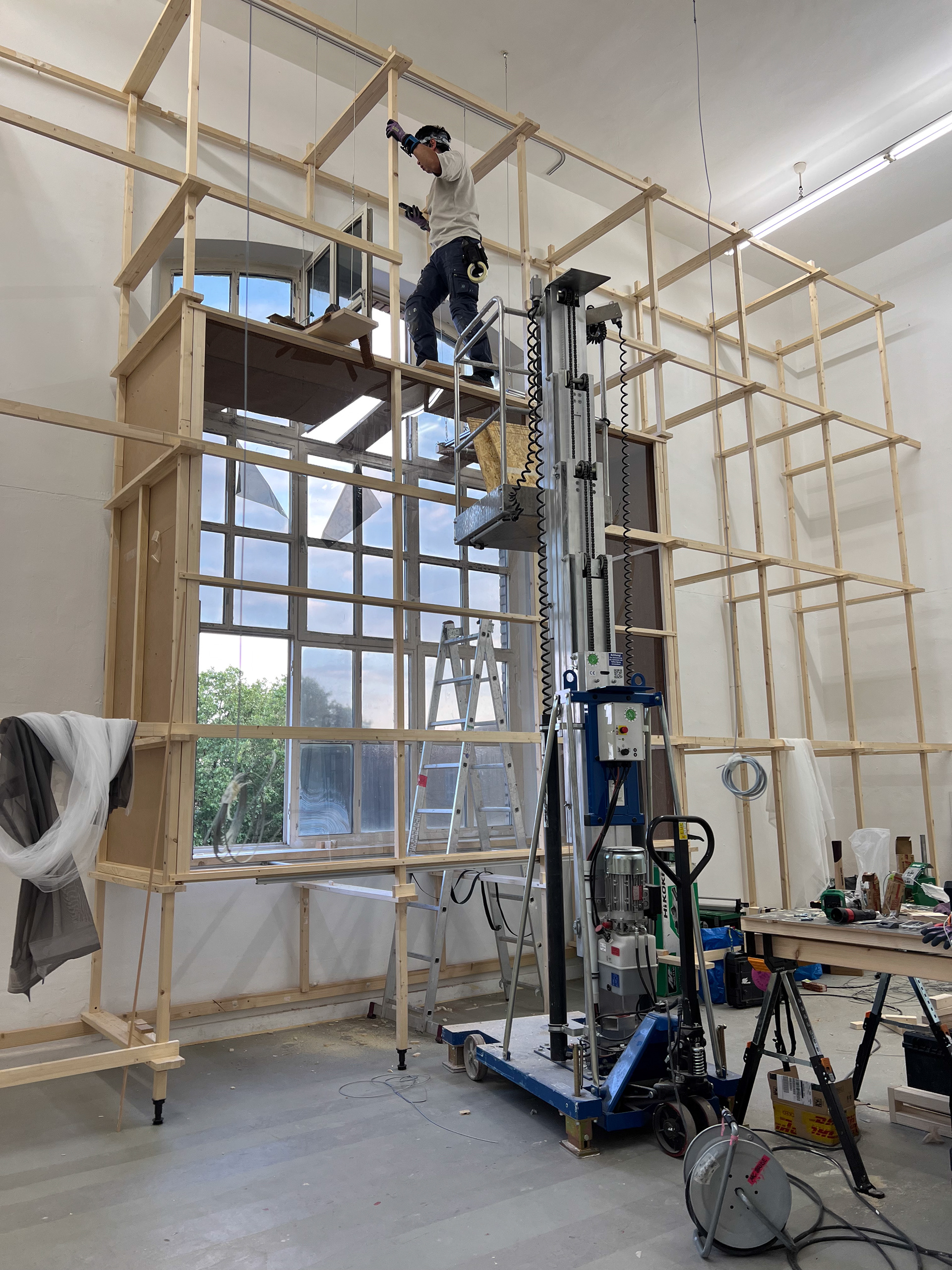
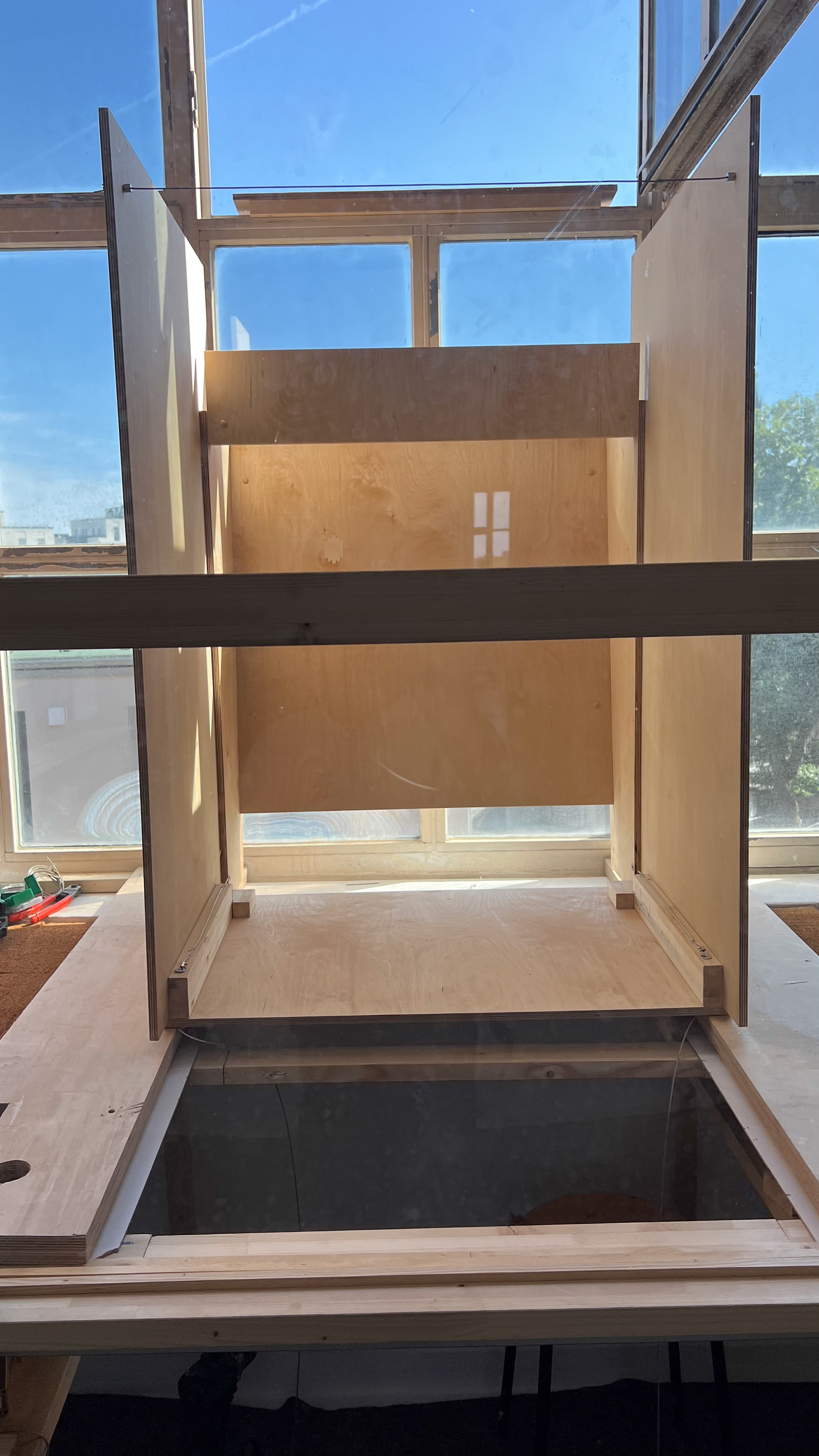
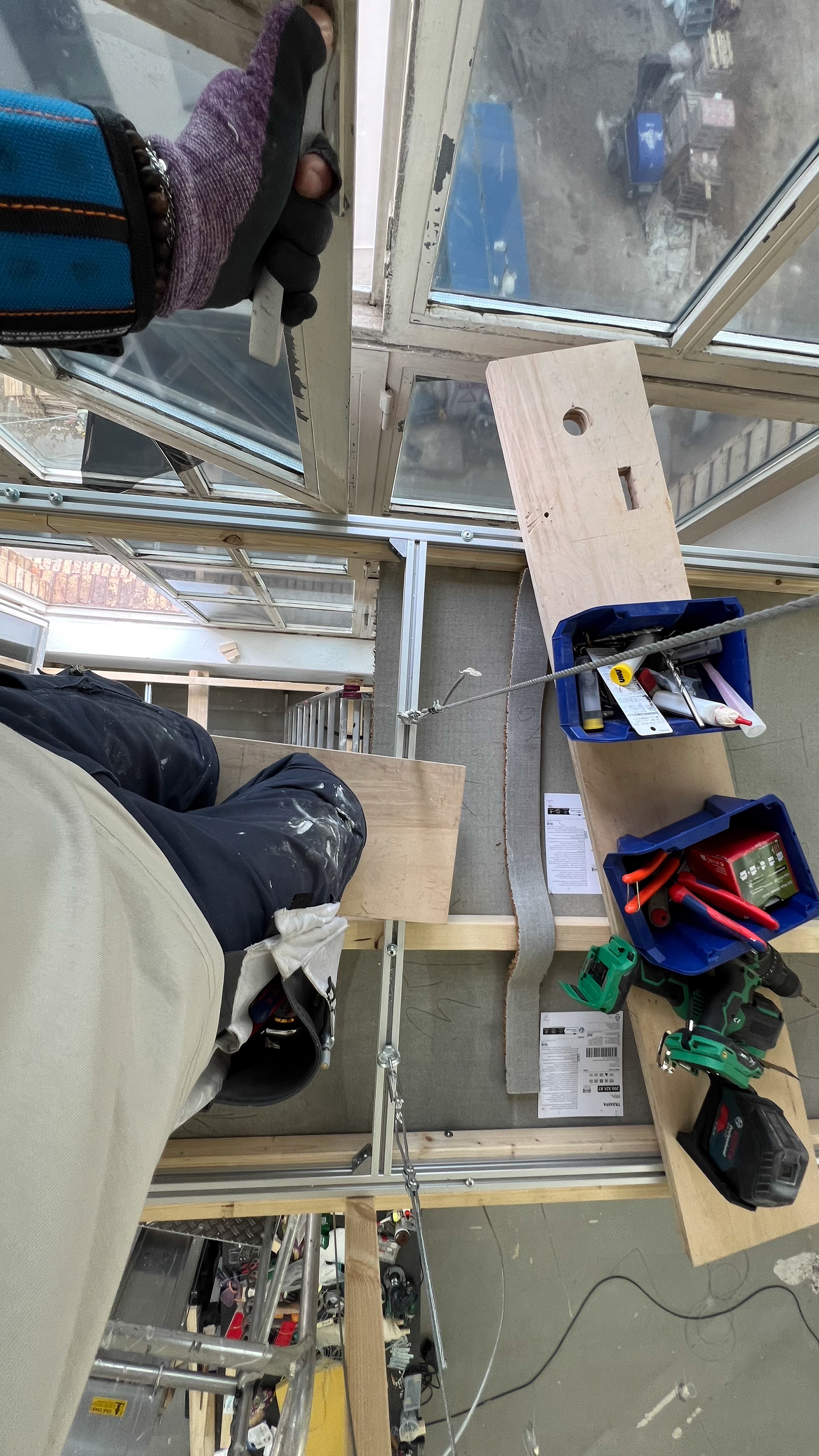

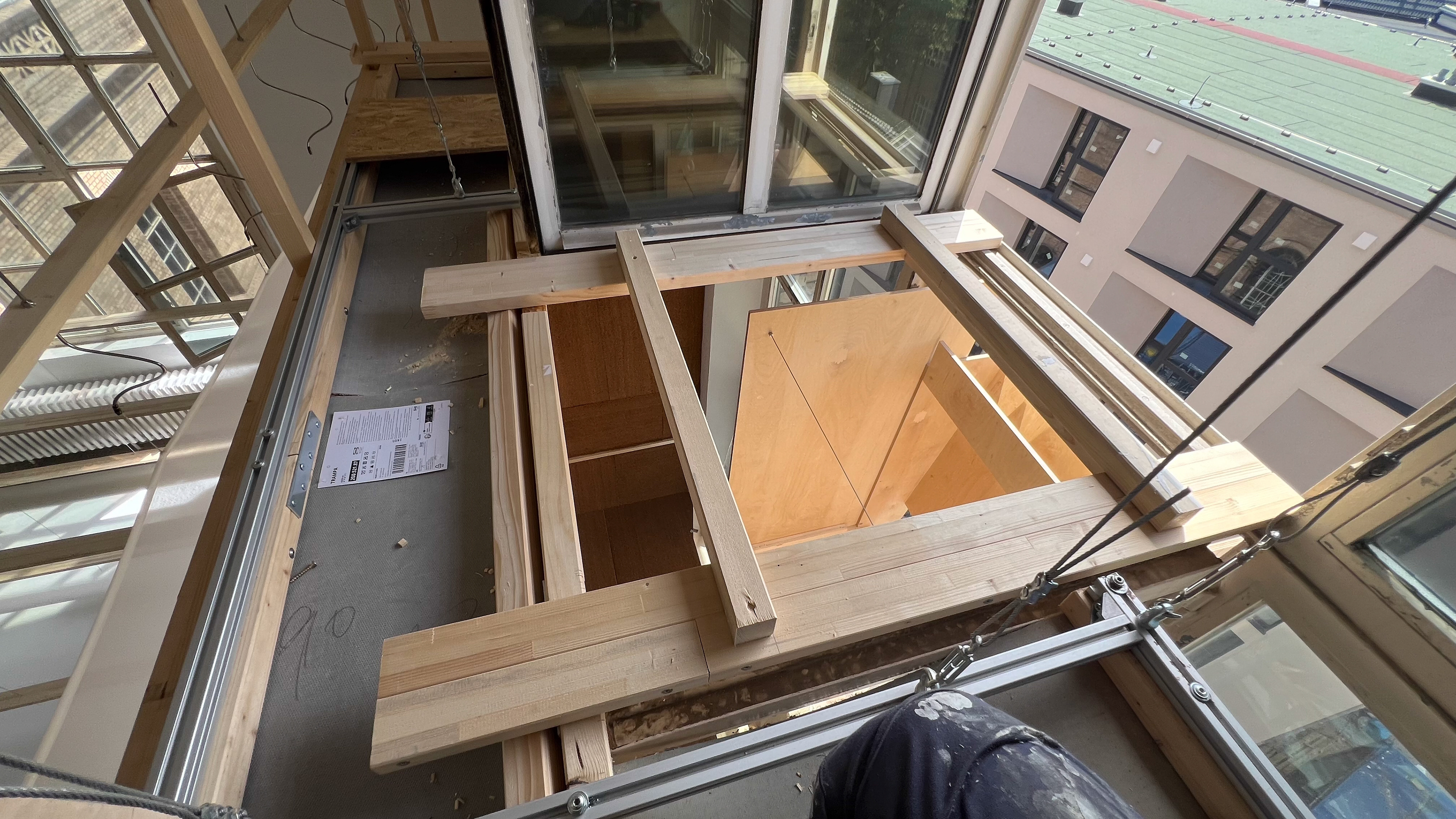


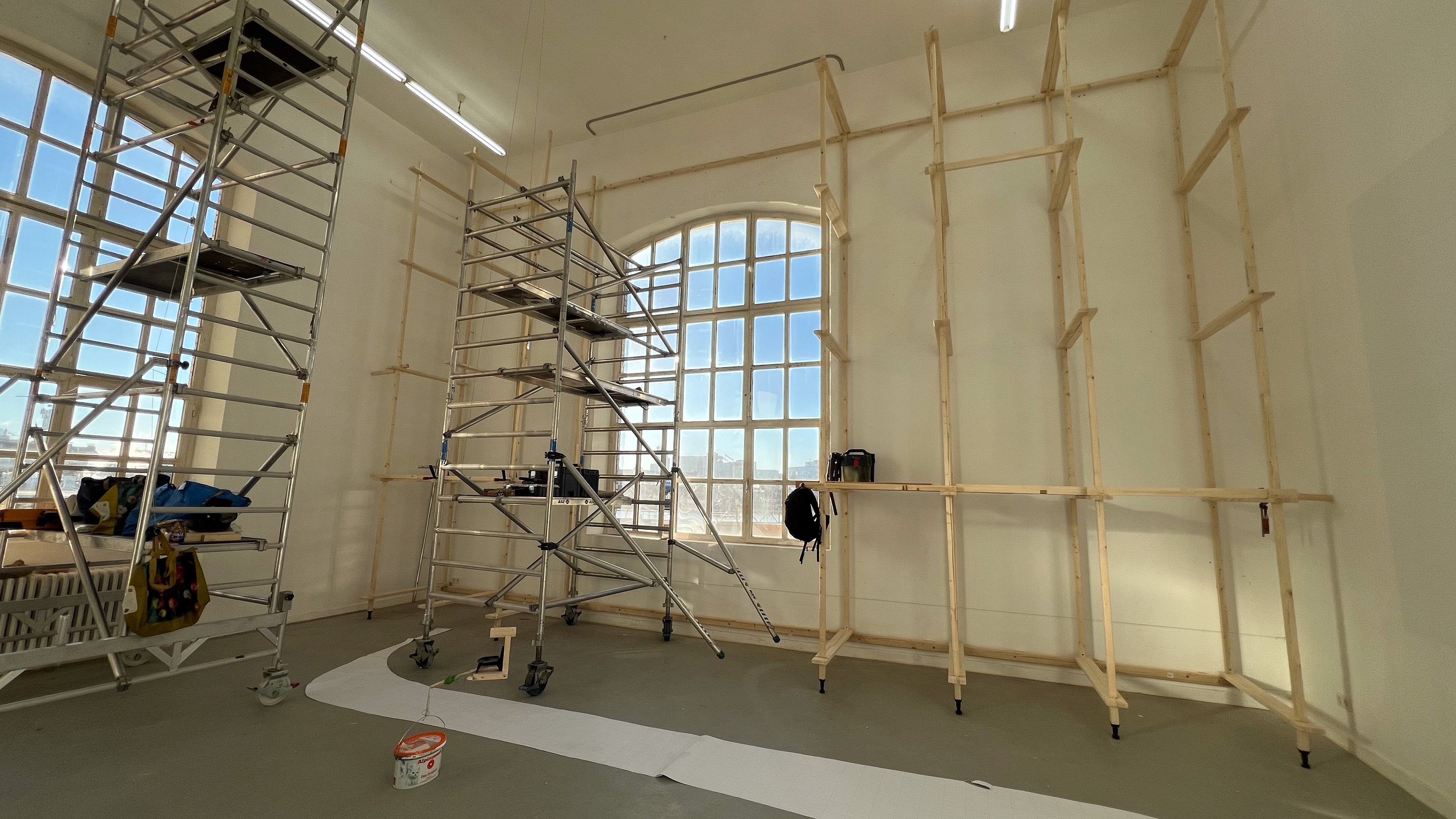

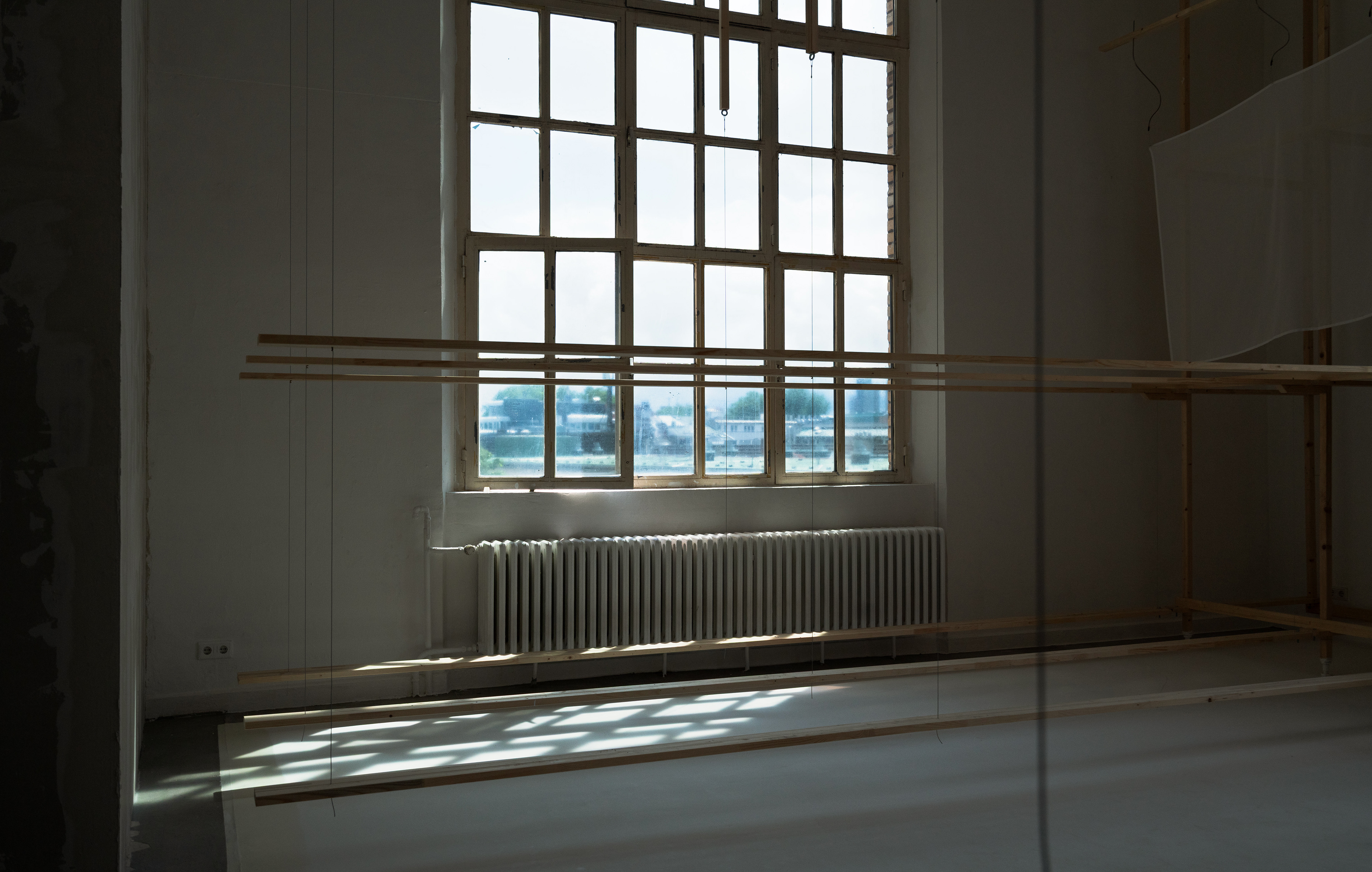
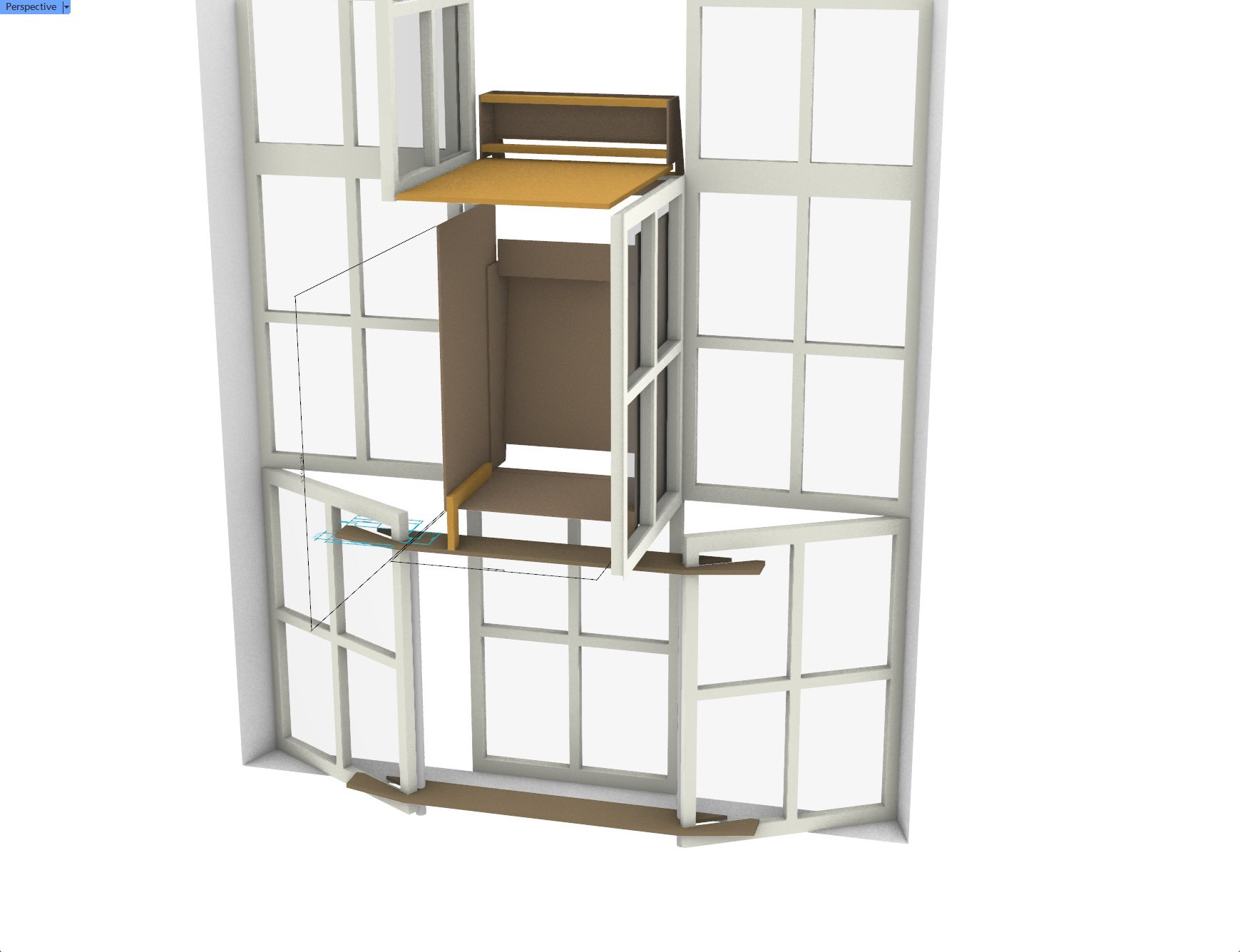


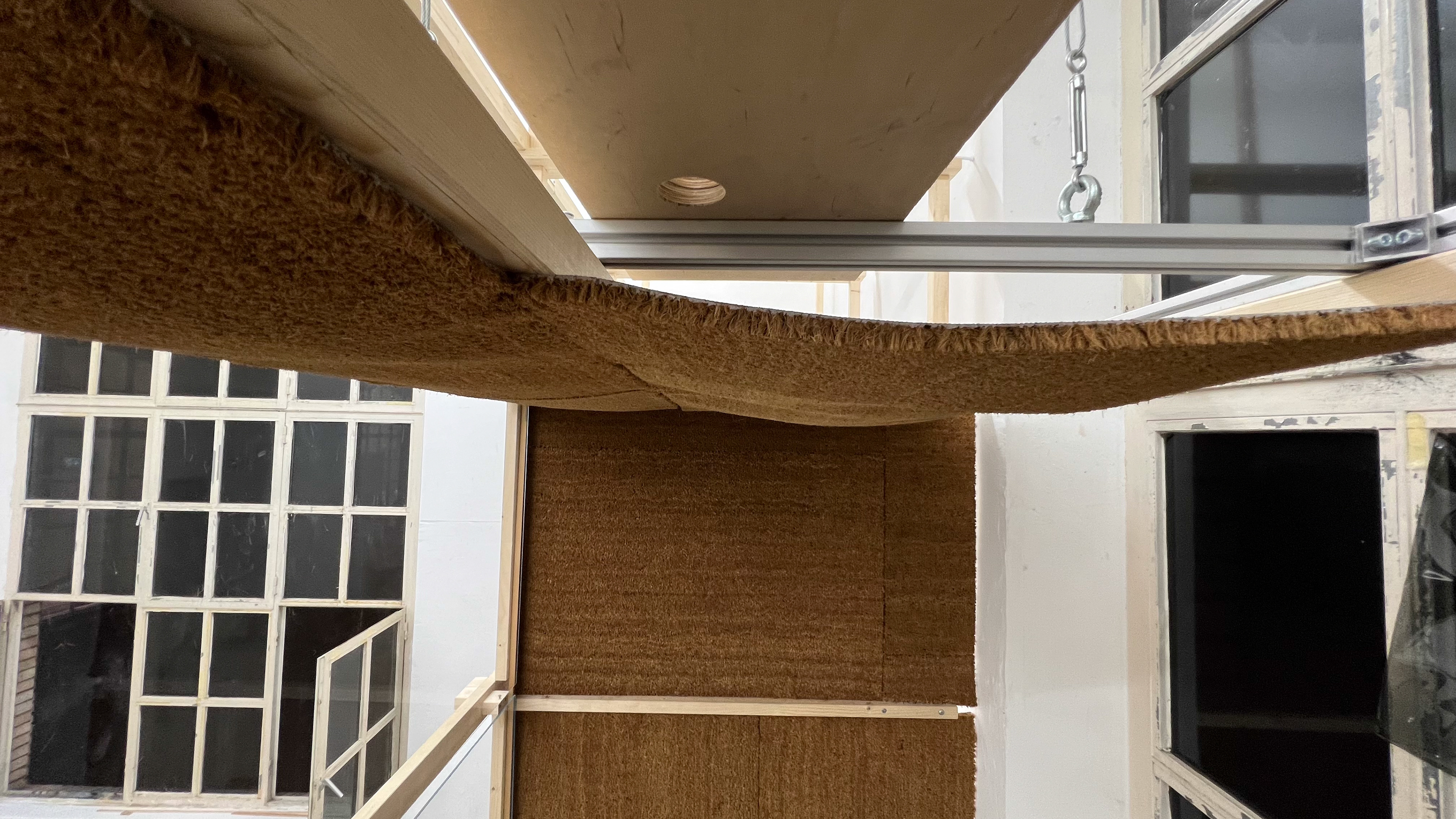

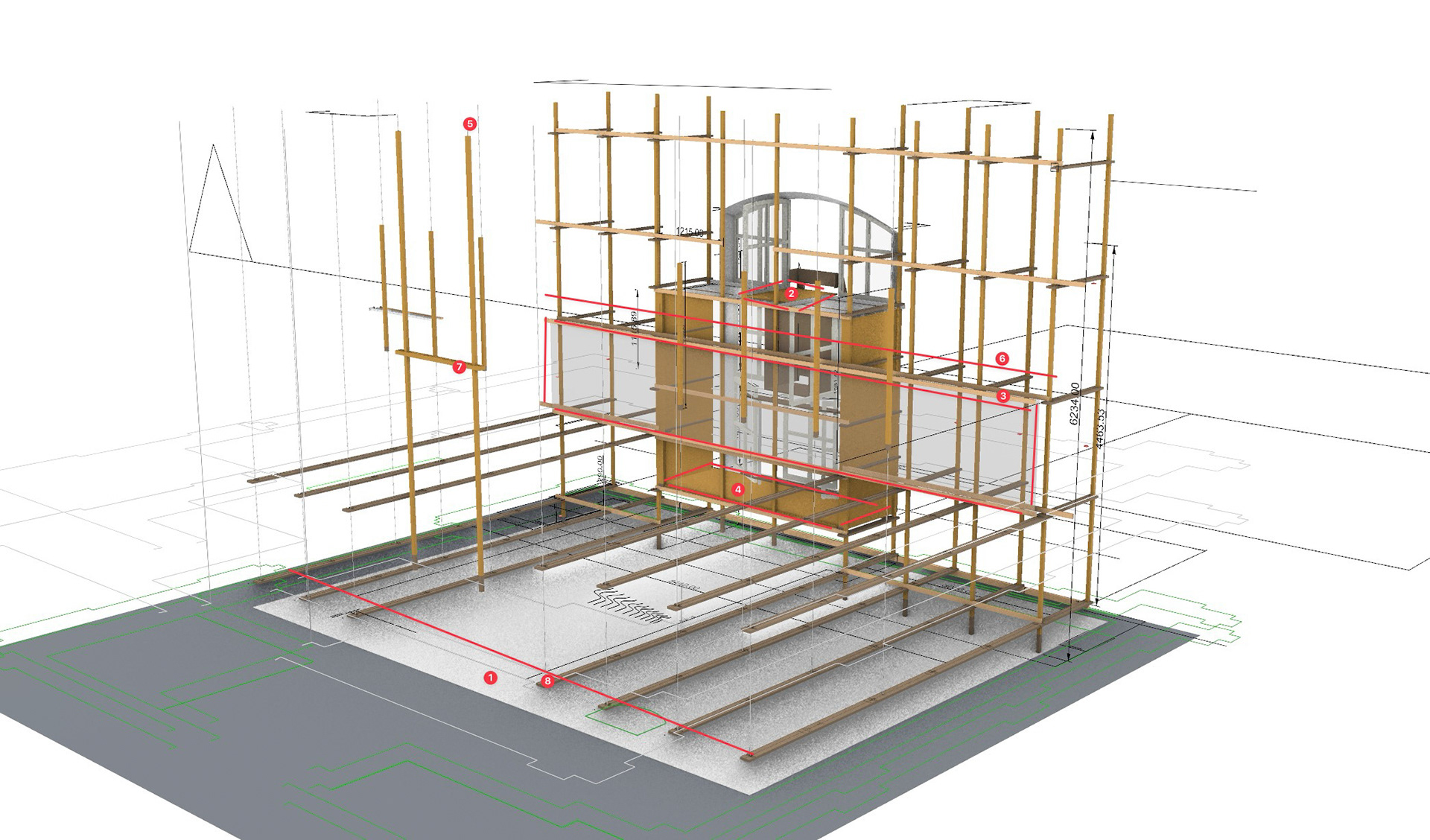
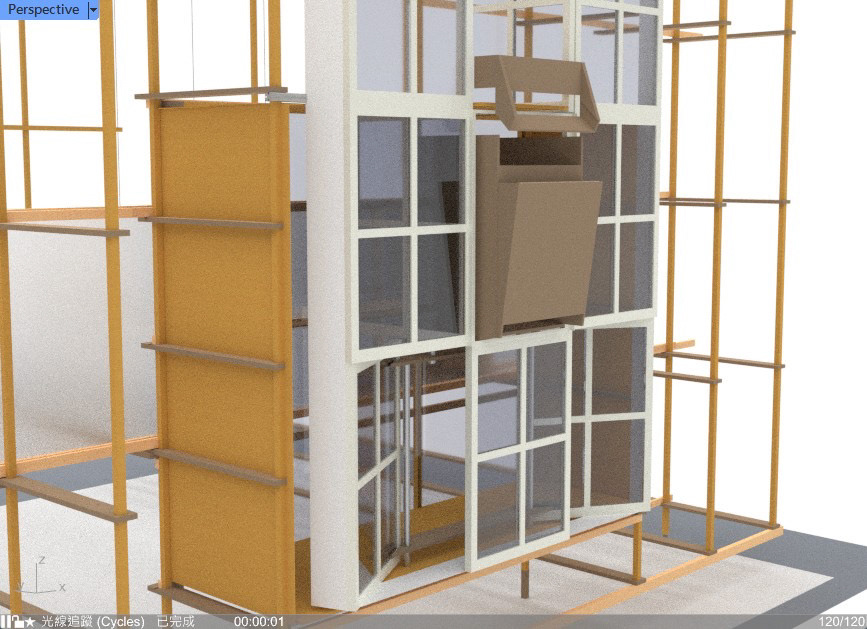
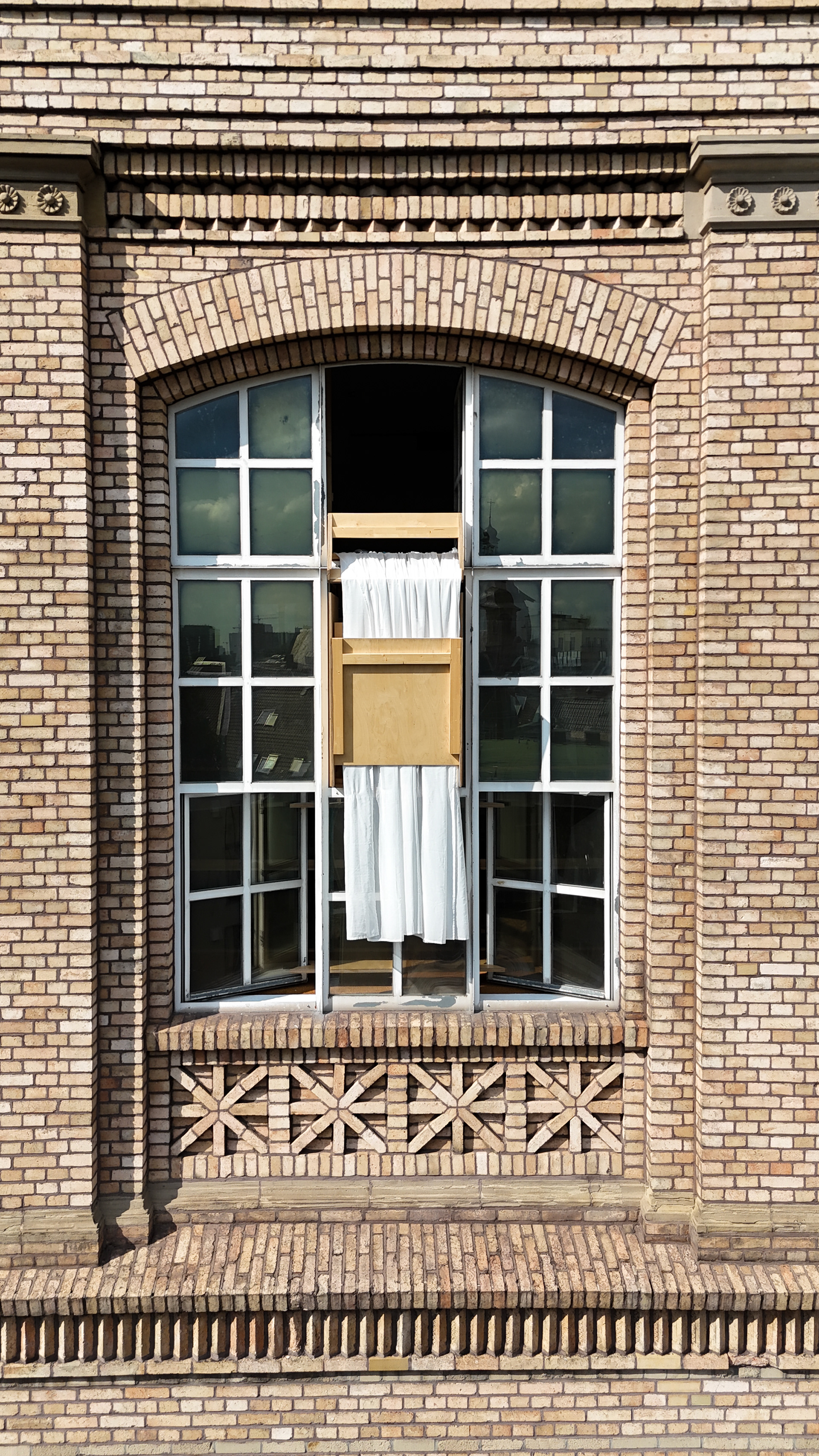
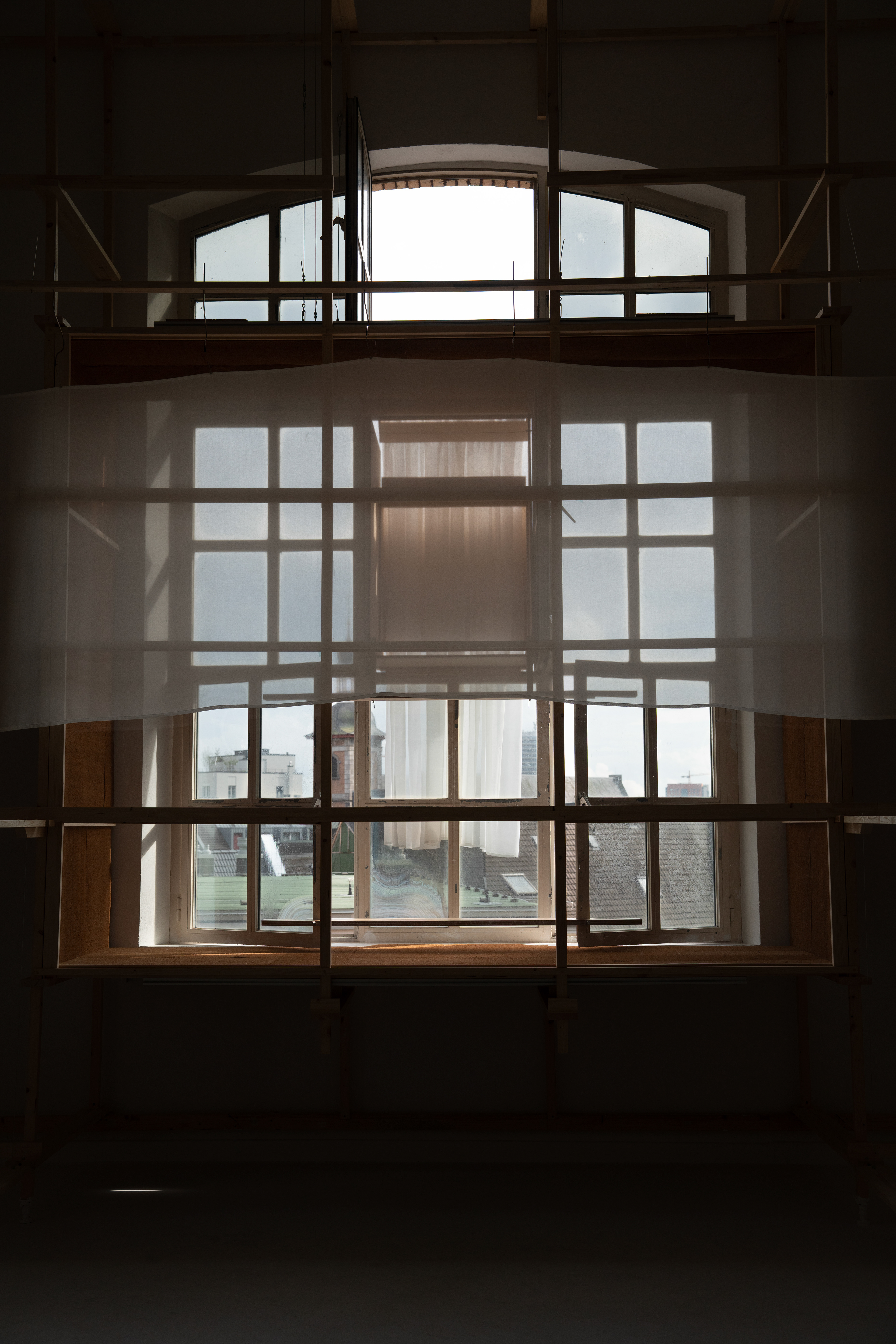
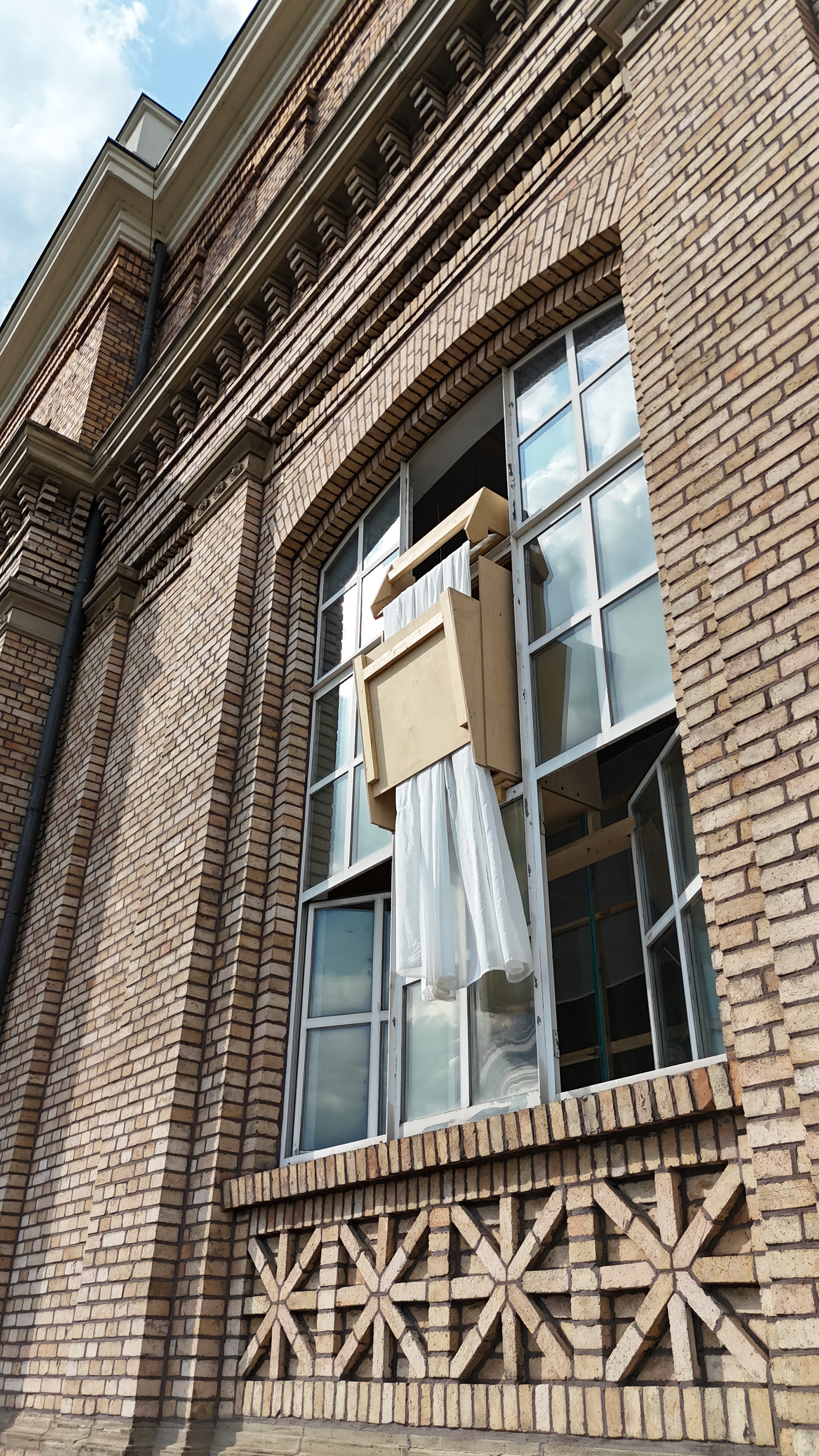


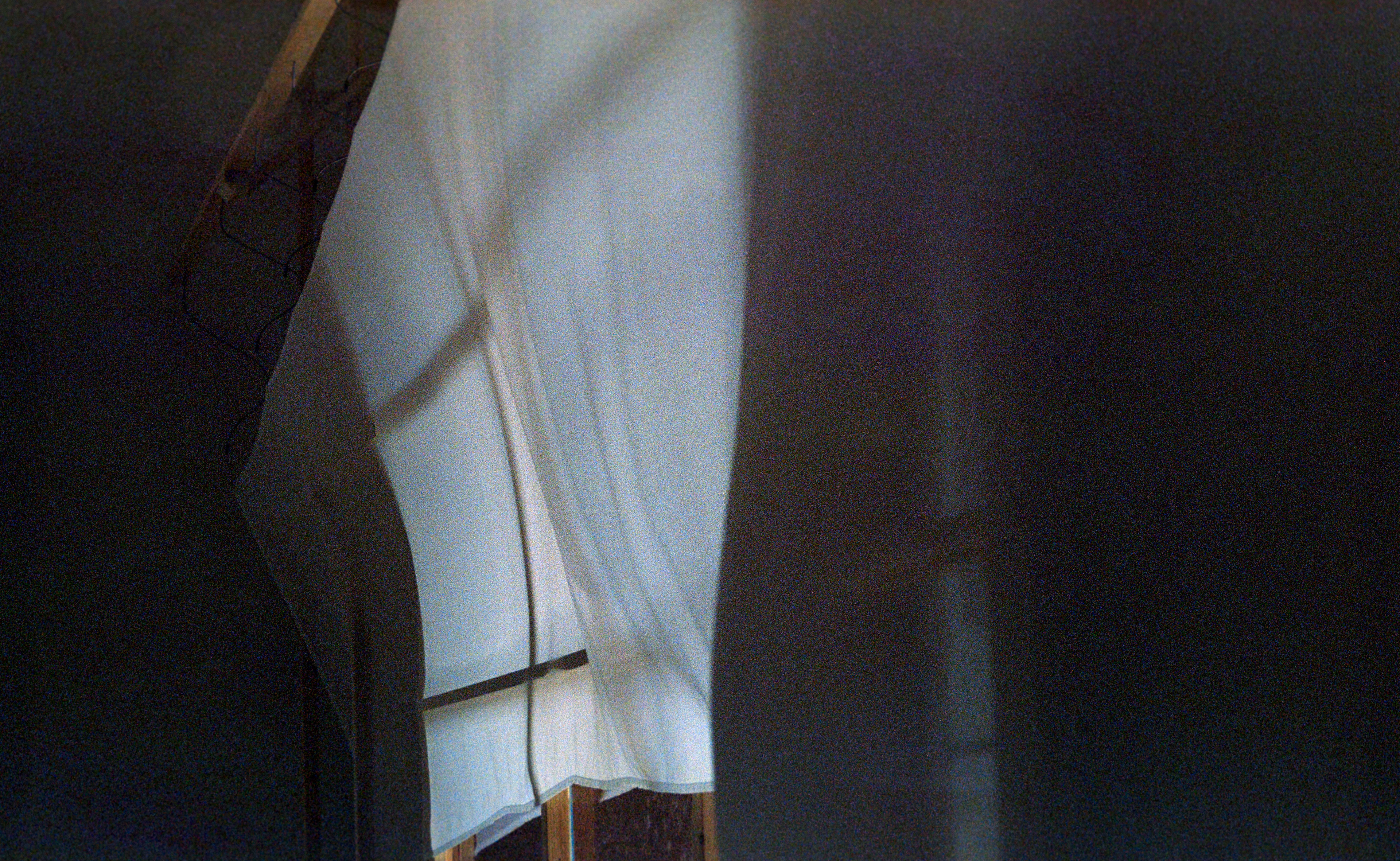
Material:
wood, spun yarn, recycled coconut husk carpet, acrylic (plexiglass), steel wire, steel bars, etc.
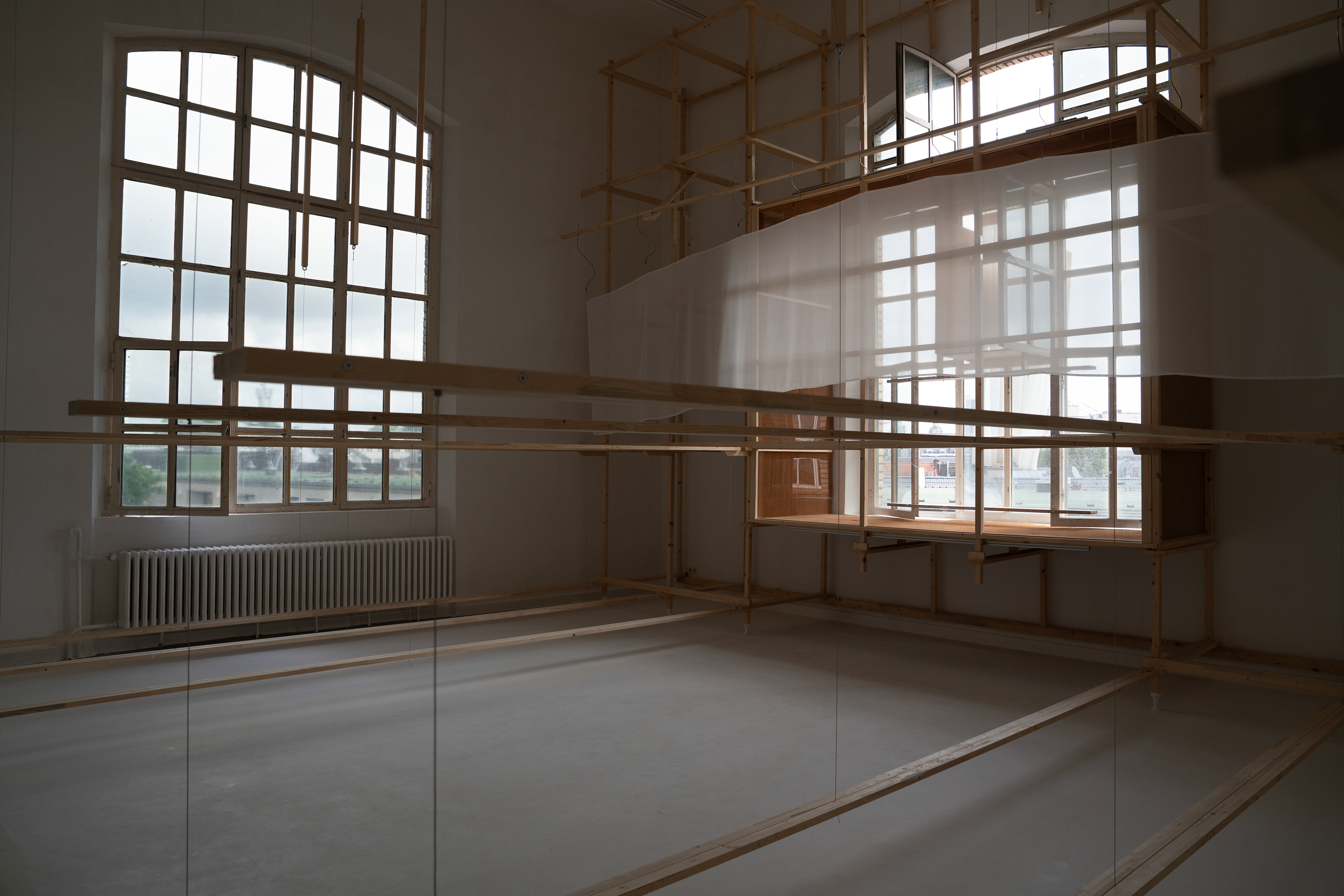
展期结束之后,这件作品将被作者完全拆除,但作为作品一部分而用水泥重新铺设的白色地面,将被保留在Rm.214内,至此作者在某种层面上也实现了对此空间的持久占据。
After the exhibition ends, the installation will be completely dismantled — except for the white cement floor, which was newly poured as part of the work. That floor will remain permanently in Room 214, marking a lasting spatial occupation by the artist.
© Hai-Ning Huang, All rights reserved.